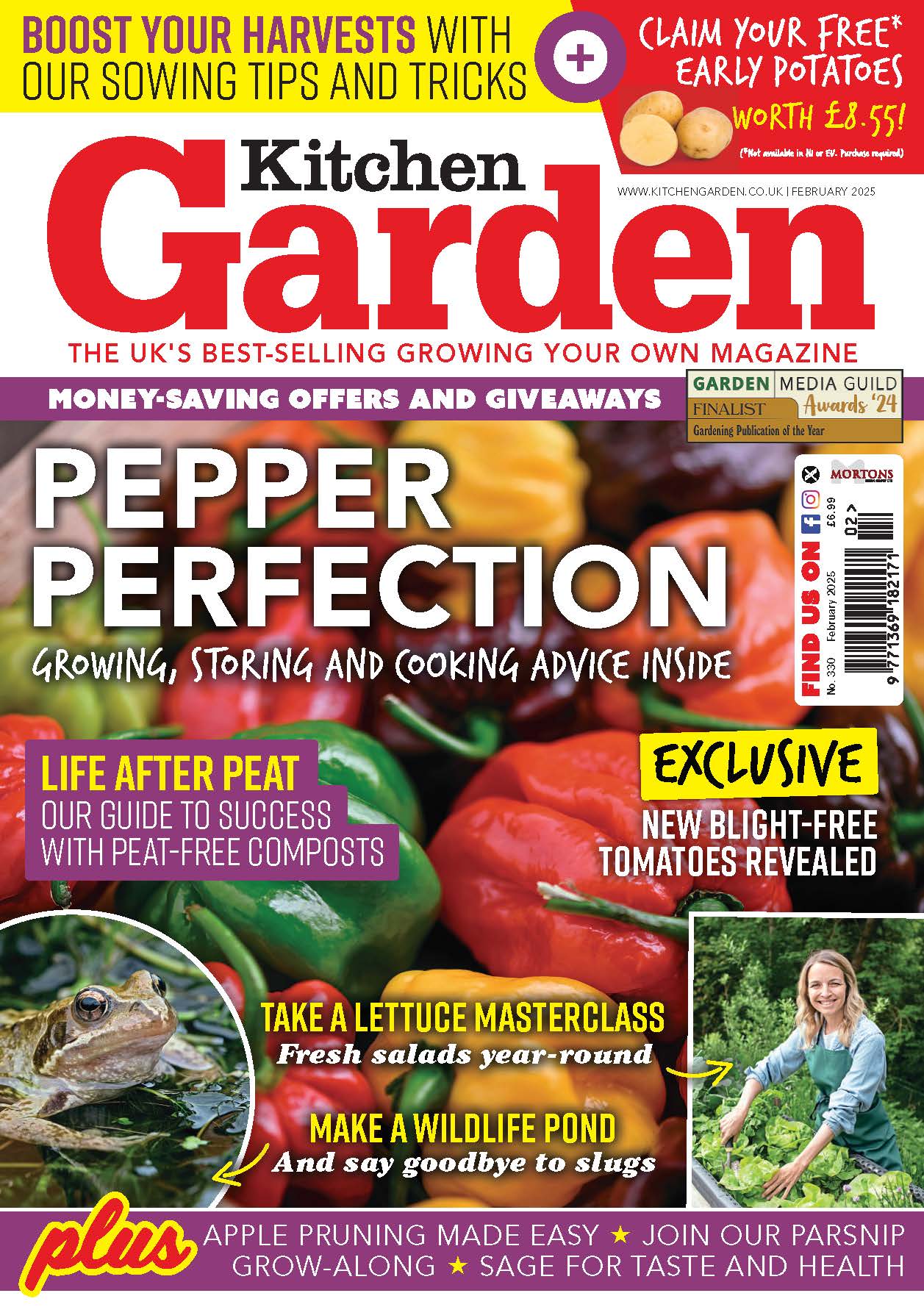
Slugs, snails and damp weather combined to make 2024 an “anus horribilis” for many home vegetable growers – says sustainable gardening charity Garden Organic.
A mild wet winter, followed by a cool and very damp spring meant that slugs and snails flourished and feasted on home grown vegetables, leaving a trail of destruction in their wake.
In its annual survey of gardeners, Garden Organic’s research manager Dr Anton Rosenfeld discovered many gardeners had dubbed it: “the year of the slug”.
“The survey showed that ‘armies of slugs’ had attacked plants that would normally be untouched, even felling tomato plants in one location,” he says. “And many directly sown crops were demolished as they emerged with people repeating sowings numerous times, just to try and establish a crop.”
The Garden Organic members’ enquiry line was also inundated with calls. Hundreds of worried gardeners asked about how to tackle slugs, pests and diseases, and cold/wet/wind damage. There were many complaints of raspberries not fruiting, broccoli and calabrese not cropping, all types of beans being late and a lack of courgettes and squashes.
“The very cool spring meant there were fewer pollinators around, so fruits failed to set on many vegetables,” adds Rosenfeld. “And low levels of sunshine meant generally lower yields.
“There were also quite a few reports of leafy crops such as chard and lettuce starting to flower early – this phenomenon is unusual, being more commonly associated with hot dry conditions.”
There were some redeeming features of 2024. The lack of insects meant that there were fewer insects pests – cabbage white butterflies did not arrive until late August. Though, due to the mild autumn, they persisted into November. The mild autumn also allowed people to harvest a lot later than usual, although low light levels compromised yields and quality.
GARDEN ORGANIC’S BEST AND WORST PERFORMING CROPS OF 2024
Squashes
Squashes were the worst performing crop in 2024 with 23% of crops being termed ‘a disaster’ and 38% termed poor. Slugs gobbled up most of the seedlings and cold dull weather meant that plants either reached full size very late or not at all. The lack of pollinators also prevented many from setting fruit, and those that did failed to ripen.
One survey respondent said: “This was the most disappointing growing year in my 50 years of gardening.”
Carrots
Of all the crops surveyed, carrots managed to achieve the highest proportion (25%) of crops that were classed as a ‘disaster’. Most earlier sowings did not germinate due to slug attack. The few people who managed to get later sowings to germinate, however, did achieve good yields.
Some growers achieved good yields of potatoes but there were complaints about poor quality texture and flavour. There was also extensive slug damage especially for any maincrop varieties left in the ground.
Lettuces
It’s no surprise that the pesky slugs were also a big challenge for those growing lettuces. Some of those that escaped the invasion did well, but generally they were slow growing. As with the chard, a significant number of growers found plants that remained small then quickly went to flower.
Chard
Many people had to resow chard multiple times due to the slug assault and cold temperatures but once it germinated, this was one of the better crops. Some gardeners reported that plants remained small, then went to seed early – and that beet leaf miner was causing more damage than in previous years.
Tomatoes
Tomato growers had a very late season characterised by slow growth and poor fruit set due to a lack of pollination. Some people also said the flavour was poor due to lack of sunshine. The mild weather in autumn allowed for some harvesting into November, but by this time, light levels were low and couldn’t make up for loss of growth earlier in the season.

GARDEN ORGANIC’S TOP TIPS FOR TACKLING SLUGS AND SNAILS
1. Good hygiene
Keep your garden and greenhouse uncluttered and free from old pots and tarpaulin, so there are fewer places for slugs and snails to congregate.
2. Plant out later
Sturdy seedlings are generally better able to withstand some nibbling. As they age leaves produce a chemical called ‘lignin’, which is coarse and bitter – and can put off our slimy friends.
3. Use a toolkit of barriers
Copper tape around pots or a circle of gravel, eggshells or comfrey leaves around precious plants can deter slugs and snails as they don’t like sliding across uncomfortable surfaces.

4. Create wildlife habitats
One of the best ways to mop up excess slug populations is by attracting plenty of predators. Add a pond, bird table, nest box or log pile and toads, frogs, birds and beetles will all enjoy a slug/snail banquet.
5. Tolerate them
Finally, remember that slugs are part of a balanced garden eco-system and only become a problem if there are huge numbers. Leopard slugs (Limax maximus) and many of the slugs found in compost bins, for example, do the gardener a really big favour by recycling spent plant material.
Find out more at www.gardenorganic.org.uk/slugs-and-snails – where you can also find out how to become a member and support the charity.




